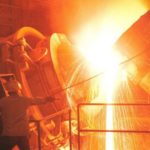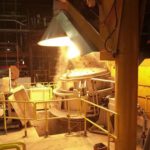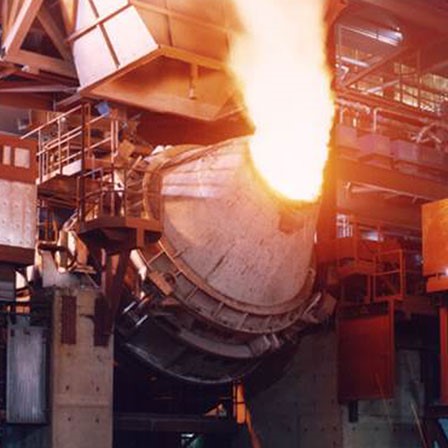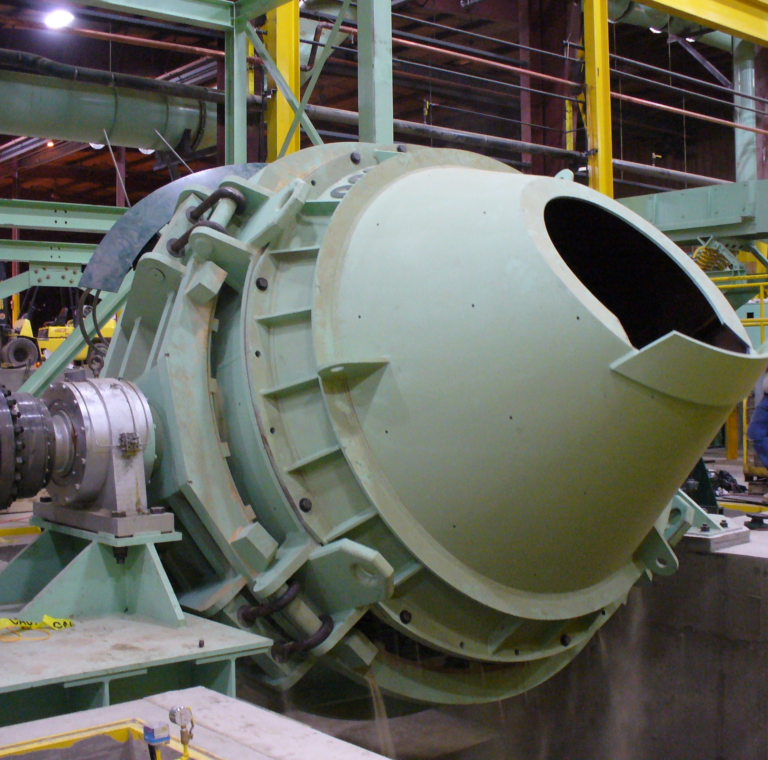AOD Treatment
Our AOD Treatment Equipment
Argon Oxygen Decarburization (AOD) Treatment is the recognized standard for stainless steel refining worldwide. Whether you are producing castings, wrought stainless, low alloy, or specialty steels, AOD provides numerous advantages:
- High Metallic yields
- Flexibility in low cost raw materials selection
- Pinpoint accuracy in achieving desired aim chemistries
- Precise control of carbon to 0.01% and lower
- Rapid desulfurization to less than 0.001%
- Lead removal to less than 0.001%
- Cleaner metal, with low residual oxygen, nitrogen and hydrogen Increased production capacity from a relatively small capital investment

The Advantages of AOD
Among the major advantages of AOD steelmaking are the increased quality of stainless and the lowered cost per ton. AOD users report the process consistently turns out a quality of stainless that approaches vacuum-degassed material.
And many indicate significant savings have been achieved from such AOD factors as: elimination of the need for adding costly low-carbon ferrochrome to the melt; lower operating temperatures and less time necessary in the arc furnace; plus several other time and material savings. Production increases have also been realized by freeing the electric arc furnaces from the refining job. Besides these advantages, AOD advocates report the process offers simplicity, flexibility, control and reproducibility far superior to electric furnace practices.

The Argon-Oxygen Process
In the argon-oxygen process, the bath of molten steel receives simultaneous injections of argon or nitrogen and oxygen for decarburization of the melt. Since argon has a cooling effect and oxygen creates heat the temperature of the melt is readily controlled by the amounts of the two gases injected.
Nitrogen can be substituted for argon in some grades of stainless, resulting in a savings in argon cost and nitrided ferrochrome or nitrided ferromanganese additions. The process is accomplished in an A0D refining vessel designed especially for this steelmaking method. The steel-shell, refractory-lined A0D vessel, which resembles a Bessemer converter, is mounted on a trunnion for rotating from horizontal to vertical, and is equipped with tuyeres through which the argon and oxygen are injected.

Whiting awarded with building the first AOD vessel
The job of building the world’s first AOD vessel was awarded to Whiting, a recognized leader in engineering primary metalworking equipment.
The Whiting AOD vessel design provides an all-welded, stress-relieved treatment bowl with heavy steel horizontal reinforcing ribs and gusset plates to retain the vessel shape after many heats. The locking arrangement provides quick changeover and allows for expansion between the bowl and trunnion ring. The vessel can be furnished with a completely accessible control panel for regulating gas injections and easily controlling the entire operation of the vessel. One of the keys to any successful AOD operation is the AOD vessel itself. It must be comparatively lightweight and extremely rugged. Since the process requires frequently changing the vessels for relining, they must be easily and quickly interchangeable.

